 |
 |
 |
| |
HCV Protease ITMN 191, In Vitro Resistance -
|
| |
| |
Reported by Jules Levin
DDW May 21 2006, Los Angeles
"Generation and Characterization of HCV Replicons with Reduced Sensitivity to ITMN 191, a Macrocyclic Inhibitor of NS3/4A"
S. Seiwert1; S. W. Andrews2; H. Tan1; K. R. Condroski2; J. A. Ballard2; B. A. Bernat2; J. A. Josey2; L. M. Blatt1
1. InterMune, Inc., Brisbane, CA, USA.
2. Array BioPharma Inc., Boulder, CO, USA.
Author Conclusions
- ITMN-191 is a potent NS3 protease inhibitor with significant liver exposure in animal species at 12 hr
- D168A is the dominant change allowing replicon persistence at 12 hr primate liver [ITMN-191]
- ITMN-191 active against A156T replicon & may have a favorable cross-resistance profile with VX-950
- ITMN-191 in combination therapy
- ITMN-191 + PEG IFN a-2a Display synergistic antiviral effects (CI =0.3 to 0.4)
- D168A-bearing replicon is hypersensitive to PEG IFN a-2a (-10-fold)
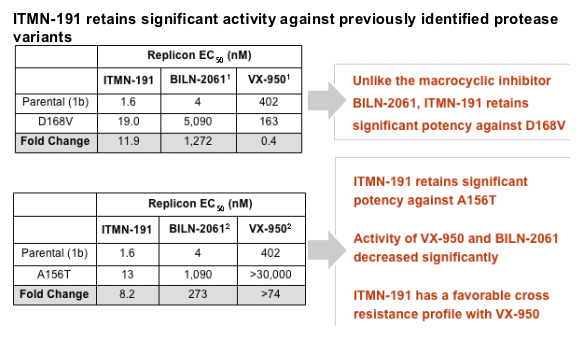
The standard of care for chronic HCV infection affords a sustained virologic response in -50% of chronic HCV patients-thus the need for novel therapeutic approaches. We therefore embarked on a rational drug design campaign to produce inhibitors of the HCV NS3/4A protease. ITMN 191 (an active site inhibitor with a macrocyclic structure) emerged from this discovery effort and was nominated as a preclinical candidate. In a genotype-1b replicon system, ITMN 191 displays an EC50 of 2.1 nM and an EC90 of 5.6 nM. It has liver levels in multiple species predictive of efficacious exposure in humans at moderate doses, and displays an acceptable tolerability profile.
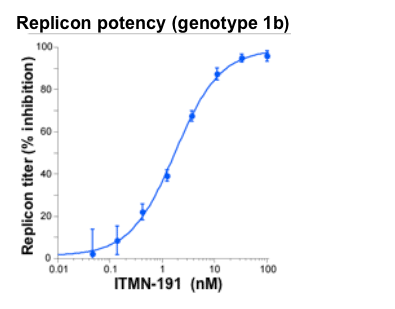
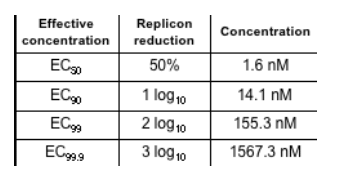
To understand the resistance profile of ITMN 191, we incubated it with a genotype-1b HCV replicon in increasing concentrations ranging from 20 nM to 320 nM (10-fold to 160-fold the original EC50 value). As measured by its EC50 value, the potency of ITMN 191 was reduced by 149-fold against replicons that persist in the presence of 320 nM ITMN 191. Sequence analysis demonstrated that all such replicons carried the previously identified mutation D168A; this mutation disrupts a salt bridge to R155. Structural modeling suggests that loss of this salt bridge would partially occlude binding of ITMN 191's fluoro-isoindolene P2 group. In a biochemical activity assay, D168A shifted the EC50 of ITMN 191 from <300 pM to 4.5 nM. The majority of replicons that persist in the presence of 320 nM ITMN 191 additionally carried both V116M and E30A mutations. Biochemical characterization of the potential contribution of these mutations is underway.
In conclusion, HCV replicons with reduced sensitivity to ITMN 191 harbor a D168A mutation. The additional presence of V116M and E30A mutations in ITMN 191-resistant replicons, residues that are far from the binding site of ITMN 191, suggests that if these sequence changes contribute to replicon fitness or ITMN 191 resistance, it is through an indirect mechanism. Interestingly, the D168V mutation that confers resistance to the macrocyclic inhibitor BILN-2061 was not observed in this study. Biochemical analysis has previously demonstrated that ITMN 191 retains subnanomolar potency against D168V. Additionally, it is noteworthy that mutations that confer reduced sensitivity to both BILN-2061 and linear tetrapeptide inhibitors such as VX-950 (A156T/V) were not identified in this study. Again, previous biochemical analysis has confirmed that ITMN 191 retains subnanomolar potency against A156T. Thus, ITMN 191 has a favorable cross-resistance profile with VX-950 and related linear tetrapeptides, and potentially with other macrocyclic inhibitors as well.
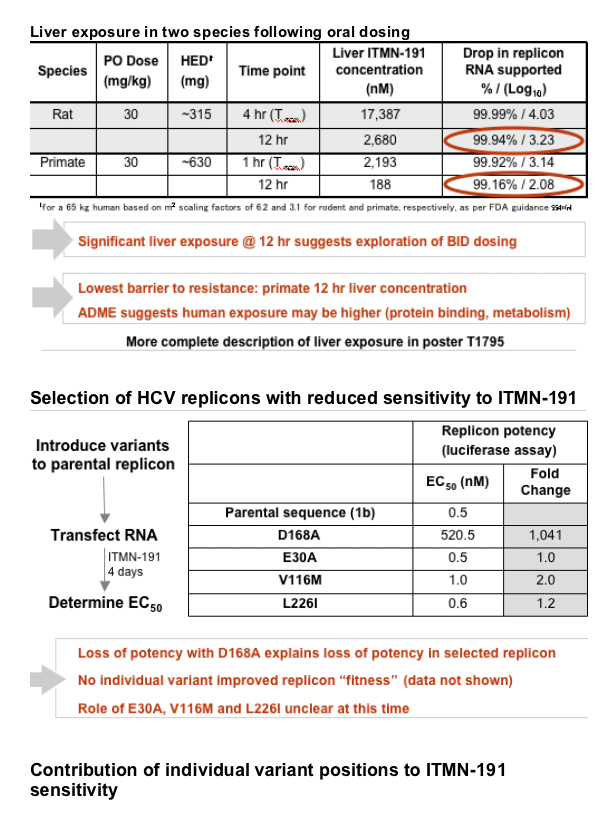
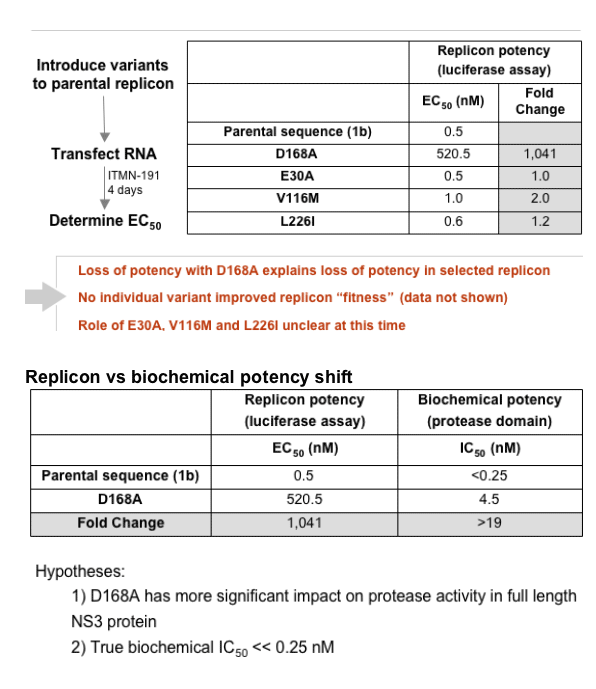
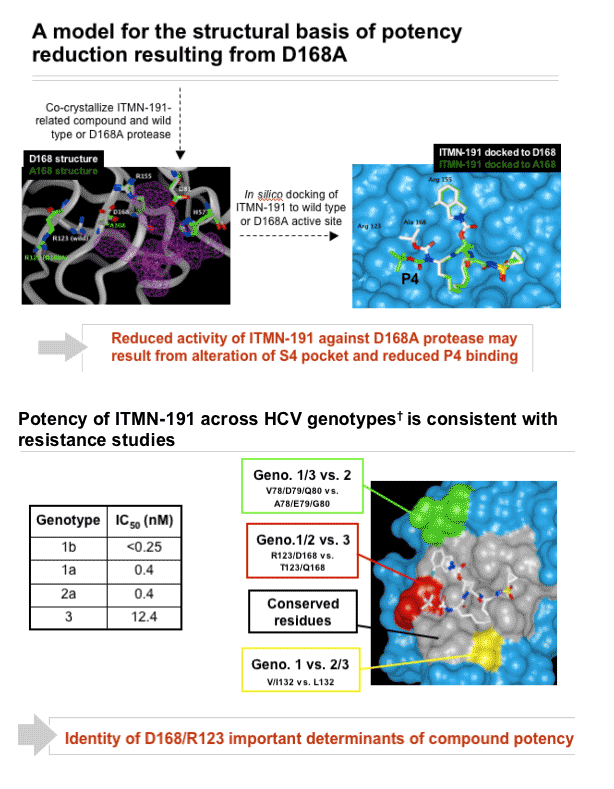
|
| |
|
 |
 |
|
|